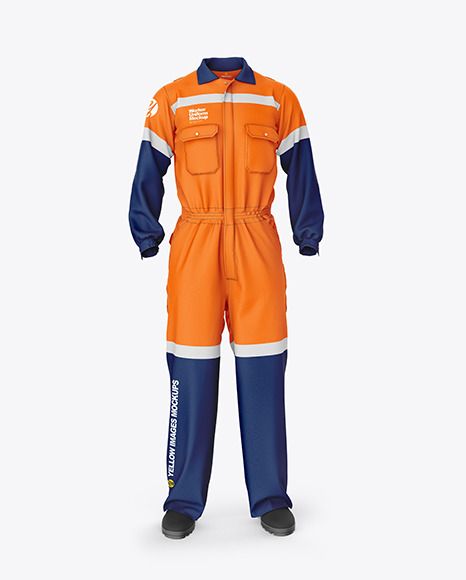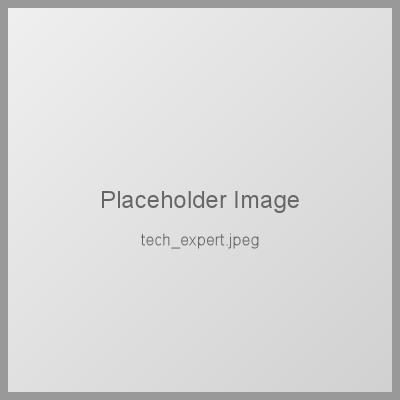
Next-Generation Smart Uniform Technologies for Saudi Arabia's Transport Sector (2025)
The convergence of advanced technology and professional workwear is fundamentally transforming Saudi Arabia's transport sector. As the Kingdom advances its Vision 2030 objectives, smart uniforms are emerging as a critical component in enhancing operational efficiency, worker safety, and organizational competitiveness within the rapidly evolving transportation ecosystem.
This comprehensive analysis examines the revolutionary potential of intelligent uniform technologies specifically tailored for Saudi Arabia's unique operational environment. From IoT-enabled monitoring systems to adaptive environmental controls, smart uniforms represent a paradigm shift toward data-driven workforce optimization and enhanced safety protocols.
The implementation of smart uniform technologies addresses multiple strategic objectives: improving worker safety through real-time monitoring, enhancing operational visibility via connected systems, optimizing resource allocation through data analytics, and positioning Saudi transport organizations at the forefront of technological innovation.

Advanced smart uniforms featuring integrated sensors, communication systems, and environmental monitoring capabilities for enhanced safety and efficiency
Core Smart Technologies
The foundation of smart uniform systems rests upon several interconnected technological platforms that work synergistically to create intelligent workwear solutions:
Embedded Sensor Networks
- Biometric monitoring systems – Continuous tracking of vital signs including heart rate, body temperature, and stress indicators to prevent heat-related illnesses common in Saudi Arabia's climate
- Motion analysis sensors – Advanced accelerometers and gyroscopes monitoring movement patterns to detect falls, fatigue, or unsafe behaviors in real-time
- Environmental sensors – Multi-parameter monitoring of ambient temperature, humidity, air quality, and chemical exposure levels specific to transport operations
- Proximity detection systems – Ultra-wideband technology preventing collisions with vehicles and machinery through automated warning systems
Intelligent Fabric Technologies
- Conductive textile integration – Seamlessly woven electronic pathways enabling data transmission without compromising fabric flexibility or comfort
- Thermoregulating materials – Phase-change materials and adaptive cooling systems maintaining optimal body temperature in extreme heat conditions
- Self-cleaning nanotechnology – Advanced surface treatments reducing maintenance requirements and extending uniform lifecycle
- Shape-memory alloys – Adaptive fit technologies automatically adjusting to movement patterns and environmental conditions
IoT Integration and Connectivity
The Internet of Things (IoT) infrastructure forms the communication backbone enabling smart uniforms to function as integrated components within broader organizational systems:
Real-Time Data Transmission
- 5G network optimization – Leveraging Saudi Arabia's advanced 5G infrastructure for ultra-low latency data transmission and real-time response capabilities
- Edge computing integration – Local processing capabilities reducing bandwidth requirements while enabling instant decision-making for critical safety alerts
- Mesh networking protocols – Worker-to-worker communication networks ensuring connectivity even in areas with limited infrastructure coverage
- Cloud platform synchronization – Seamless integration with enterprise resource planning systems and fleet management platforms
Fleet Management Integration
- Vehicle telematics synchronization – Coordinated monitoring of driver status and vehicle performance creating comprehensive operational oversight
- Route optimization algorithms – Worker location and status data feeding into intelligent routing systems for improved efficiency
- Predictive maintenance systems – Integration with vehicle maintenance schedules based on driver behavior patterns and environmental exposure
- Automated compliance reporting – Real-time documentation of safety protocols and regulatory compliance for transport authorities
Advanced Safety Features
Safety enhancement represents the primary value proposition of smart uniform technologies, particularly crucial in Saudi Arabia's high-risk transport environments:
Predictive Safety Systems
- AI-powered risk assessment – Machine learning algorithms analyzing behavioral patterns and environmental conditions to predict potential safety incidents before they occur
- Fatigue detection algorithms – Advanced monitoring of sleep patterns, reaction times, and cognitive performance preventing accidents due to driver exhaustion
- Emergency response automation – Instantaneous alert systems activating emergency protocols and dispatching assistance when critical thresholds are exceeded
- Hazard identification systems – Computer vision integration identifying potential workplace hazards and providing real-time warnings to workers
Active Protection Technologies
- Dynamic visibility enhancement – Adaptive LED systems adjusting brightness and pattern based on ambient lighting conditions and proximity to vehicles
- Impact protection systems – Smart materials providing enhanced protection during impacts while maintaining flexibility during normal operations
- Environmental hazard shields – Automated deployment of protective barriers against chemical spills, extreme temperatures, or toxic gas exposure
- Emergency extraction aids – Quick-release mechanisms and location beacons facilitating rapid rescue operations in emergency situations
Performance and Health Monitoring
Comprehensive monitoring systems provide unprecedented insights into worker performance and health status, enabling proactive intervention and optimization:
Continuous Health Assessment
- Cardiovascular monitoring – Advanced ECG sensors tracking heart rhythm irregularities and stress responses during physically demanding tasks
- Hydration level tracking – Bioimpedance sensors monitoring fluid levels preventing dehydration in Saudi Arabia's extreme heat conditions
- Sleep quality analysis – Monitoring sleep patterns and recovery times ensuring drivers are adequately rested for safe operations
- Chronic condition management – Long-term health trend analysis supporting preventive healthcare and reducing insurance costs
Performance Optimization Analytics
- Efficiency metrics tracking – Detailed analysis of task completion times, movement efficiency, and productivity patterns
- Training needs identification – Data-driven insights identifying skills gaps and training opportunities for individual workers
- Ergonomic assessment – Posture and movement analysis preventing repetitive strain injuries and optimizing workplace ergonomics
- Benchmarking and comparison – Anonymous performance comparisons enabling identification of best practices and improvement opportunities
Integrated Communication Systems
Advanced communication capabilities transform uniforms into mobile command centers, enhancing coordination and operational efficiency:
Hands-Free Communication
- Bone conduction audio systems – Discreet communication capabilities maintaining situational awareness while enabling clear voice communication
- Voice command integration – Natural language processing enabling hands-free control of uniform functions and data queries
- Noise cancellation technology – Advanced filtering ensuring clear communication in noisy transport environments
- Multi-language support – Real-time translation capabilities supporting Saudi Arabia's diverse workforce
Information Display Systems
- Heads-up display integration – Augmented reality overlays providing navigation assistance, safety alerts, and operational information
- Flexible display panels – Integrated OLED displays showing status information, alerts, and communication messages
- Haptic feedback systems – Tactile alerts for safety warnings and important notifications without audio or visual distraction
- Digital badge systems – Dynamic identification displaying worker credentials, certifications, and real-time status information
Environmental Intelligence
Smart uniforms incorporate sophisticated environmental monitoring and adaptation systems specifically designed for Saudi Arabia's challenging climate conditions:
Climate Control Systems
- Personal cooling networks – Micro-channel cooling systems circulating temperature-controlled fluid through fabric networks to maintain optimal body temperature
- Adaptive ventilation – Smart air circulation systems automatically adjusting airflow based on activity level and environmental conditions
- Solar heat management – Reflective and heat-dissipating materials specifically engineered for intense Saudi sunlight exposure
- Humidity control – Advanced moisture-wicking and vapor transmission systems maintaining comfort in high-humidity coastal areas
Environmental Monitoring
- Air quality assessment – Real-time monitoring of particulates, chemical vapors, and toxic gases common in transport operations
- UV exposure tracking – Cumulative UV dose monitoring with alerts for protective action against skin damage
- Sand and dust detection – Specialized sensors monitoring particulate levels and activating protective systems during sandstorms
- Weather pattern integration – Connection to meteorological data for proactive environmental protection measures
Implementation Strategy
Successful deployment of smart uniform technologies requires a structured approach addressing technical, organizational, and cultural considerations:
Phased Deployment Approach
- Pilot program implementation – Initial deployment with select high-risk operations to validate technology performance and worker acceptance
- Technology integration phases – Gradual introduction of features starting with basic monitoring and progressing to advanced AI-driven systems
- Workforce training programs – Comprehensive education on smart uniform operation, maintenance, and troubleshooting procedures
- Performance metrics establishment – Clear KPIs and success criteria for measuring smart uniform impact on safety and efficiency
Change Management Considerations
- Cultural adaptation strategies – Addressing worker concerns about privacy, technology adoption, and traditional work practices
- Management buy-in development – Executive education on ROI potential and competitive advantages of smart uniform technologies
- Regulatory compliance planning – Ensuring smart uniform systems meet Saudi labor law requirements and international safety standards
- Continuous improvement processes – Feedback mechanisms for ongoing system refinement and feature enhancement
ROI and Cost-Benefit Analysis
Investment in smart uniform technologies generates measurable returns through multiple value streams that justify initial capital expenditure:
Direct Cost Savings
- Accident reduction benefits – Significant decreases in workplace injuries translating to lower insurance premiums and reduced compensation costs
- Maintenance optimization – Predictive maintenance capabilities reducing vehicle downtime and extending equipment lifecycle
- Fuel efficiency improvements – Driver behavior monitoring and training leading to measurable fuel consumption reductions
- Regulatory compliance savings – Automated reporting and monitoring reducing administrative costs and penalty risks
Productivity Enhancement
- Operational efficiency gains – Data-driven optimization of routes, schedules, and resource allocation improving overall productivity
- Training cost reduction – Accelerated onboarding and continuous skill development through integrated learning systems
- Quality improvement – Enhanced service delivery through better worker preparation and real-time performance monitoring
- Competitive advantage development – Technology leadership positioning for premium service contracts and market differentiation
Future Technology Roadmap
The evolution of smart uniform technologies continues to accelerate, with emerging innovations promising even greater capabilities:
Next-Generation Technologies
- Quantum sensor integration – Ultra-sensitive detection capabilities for chemical hazards and environmental threats
- Brain-computer interfaces – Direct neural monitoring for fatigue detection and cognitive load assessment
- Holographic displays – Three-dimensional information projection for enhanced situational awareness
- Autonomous emergency response – AI-driven systems capable of independent emergency intervention and rescue coordination
Integration Opportunities
- Smart city connectivity – Integration with Saudi Arabia's smart city initiatives for comprehensive urban transport management
- Renewable energy harvesting – Self-powered systems utilizing solar energy and kinetic movement for complete energy independence
- Advanced materials science – Self-repairing fabrics and adaptive materials responding to environmental changes
- Blockchain integration – Secure, immutable records of safety compliance and worker performance data
Conclusion
The integration of smart technologies into transport sector uniforms represents a transformational opportunity for Saudi Arabian organizations to enhance safety, improve efficiency, and establish technological leadership within the regional marketplace. As the Kingdom continues its ambitious modernization under Vision 2030, smart uniforms will play an increasingly critical role in achieving world-class operational standards.
Success in smart uniform implementation requires a strategic approach that balances technological capabilities with practical operational needs. Organizations that invest in comprehensive smart uniform systems today will position themselves advantageously for the connected, data-driven future of the transport industry.
The convergence of IoT technologies, artificial intelligence, and advanced materials science creates unprecedented opportunities for workplace transformation. By embracing these innovations, Saudi transport organizations can achieve superior safety outcomes, enhanced operational efficiency, and sustainable competitive advantages in an increasingly technology-driven marketplace.
About the Author

Dr. Fahad Al-Thani
Smart Textile Technology Specialist
Dr. Al-Thani is a leading expert in wearable technology and IoT integration for industrial applications. With over 15 years of experience in smart textile development, he has guided numerous Saudi organizations in implementing cutting-edge uniform technologies.